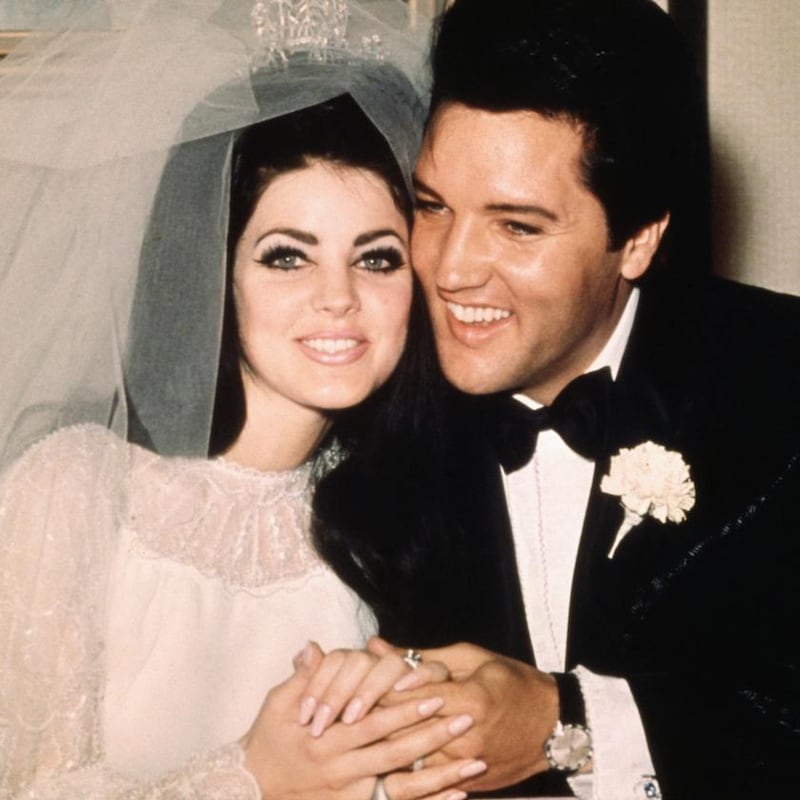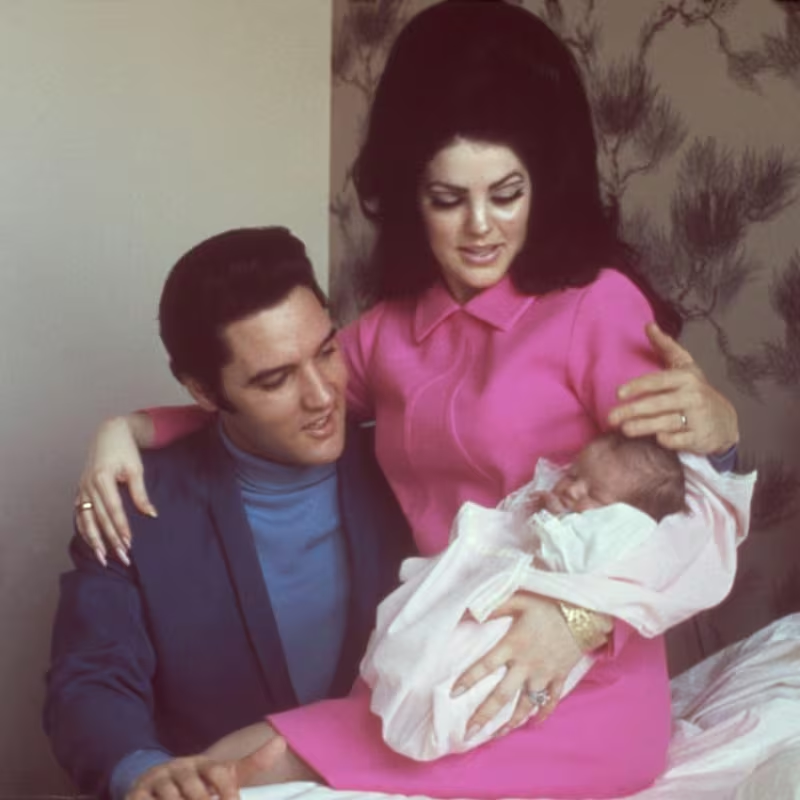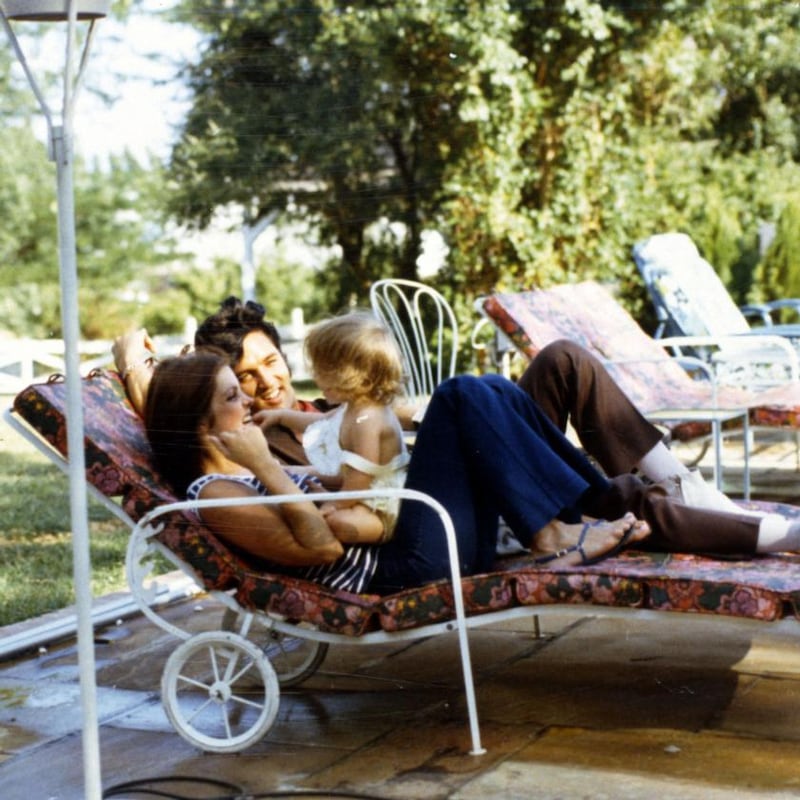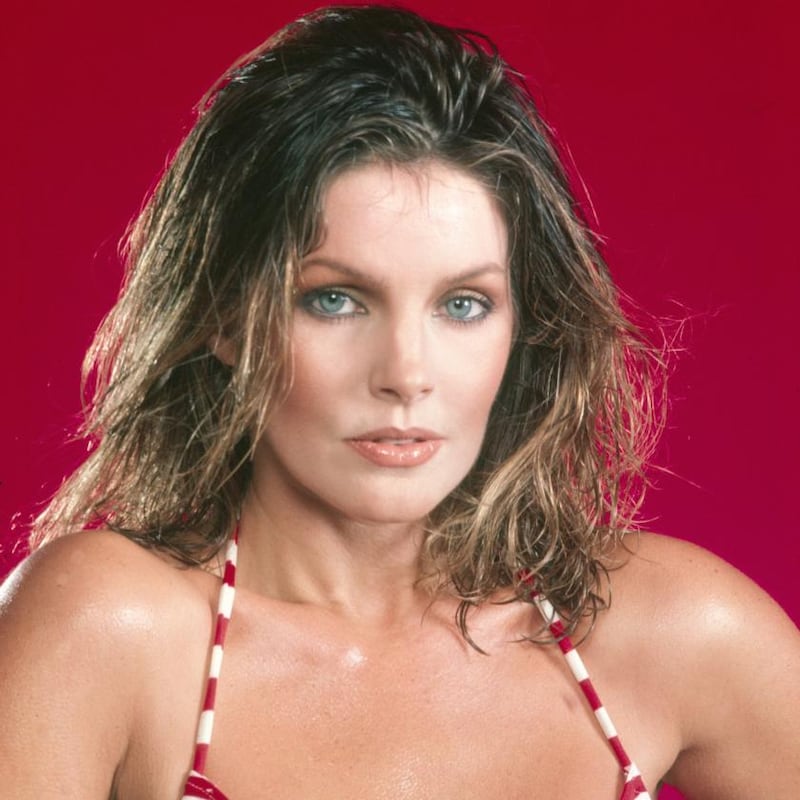"Behind those gates, that was our private home … that was his sacred place," says Priscilla Presley of the Memphis mansion that has earned the status of the US's second-most visited historical home after the White House.
“There we could shut ourselves out from the world.”
Nevertheless, some 600,000 Elvis fans walk through the home’s distinctive music manuscript-decorated wrought iron gates every year, turning Graceland over the past four decades into one of America’s top tourist destinations.
And this month part of the museum's 1.5 million-strong collection of artefacts and memorabilia is in Australia, in something of a coup for Australia's Bendigo Art Gallery, in regional Victoria: the result of more than two years of negotiation during the Covid-19 lockdown by gallery director Jessica Bridgfoot, curator Lauren Ellis, Elvis Presley Enterprises's vice-president of archives and exhibits, Angie Marchese, and Priscilla Presley herself.
Some 300 items are on display – from the mundanities of childhood (a box of crayons with Elvis's first name scrawled on the carton in red) to the trophies of early Hollywood fame (such as the red MG 1600 MKI car he owned, which featured in the 1960 film Blue Hawaii). It culminates in the celebrity excess of the Las Vegas costume room, featuring a dozen glittering 1970s jumpsuits designed by long-time Presley style collaborator Bill Belew.
Priscilla teared up while talking about the aspects of Elvis's life and personality that did not feed comfortably into the King's celebrity narrative
Visiting Bendigo earlier this month, on the weekend of the exhibition’s opening, the outsider gets the impression the entire city has caught Elvis mania.
Every second cafe, clothing retailer and hairdresser seems to have festooned their window displays with Presley iconography, as businesses pump out into the city’s main streets the classics All Shook Up, Blue Suede Shoes and Love Me Tender.
At popular brunch spot Percy and Percy they’re serving up sophisticated versions of Presley’s infamous banana, bacon and peanut butter burger combo; the Bluebird bakery is churning out blue suede choux eclairs; and the Dispensary in Bendigo’s trendy Chancery Lane is perfecting its bacon, maple syrup and tequila margarita.
Every Friday and Saturday nights for the duration of the Presley exhibition, concluding on July 17th, Bendigo Tramways' Shake Rattle n Roll express, with a mobile cocktail bar, will ferry tourists through the city's gold rush-built city streets accompanied by a high-decibel Elvis soundtrack. A two-metre high, brightly lit "Viva Bendigo" sign stands at the entry of the city's central Rosalind Park.
In comparison, the arrival of an impossibly preserved 76-year-old Priscilla to open the exhibition seemed positively understated.

The exhibition has been carefully curated to reflect an unexpected depth and complexity to the pop culture icon. At a media Q&A the day before the opening, Priscilla teared up while talking about the aspects of Elvis’s life and personality that did not feed comfortably into the King’s celebrity narrative.
While his love of fast cars, motorbikes, horses, over-the-top fashion and other women are well-documented, Elvis’s exploration into religion and spirituality is less so, as is his lifelong love of books.
He often read through the night, adding copious notes to the margins as he went.
“We could come home at two o’clock in the morning or later, and he would go right to the books and start reading,” Priscilla says.
“And he would read [out loud to me] and I would be so tired … and he would say, ‘you aren’t listening to me’ and I would say [to myself], ‘okay, keep your eyes open’.”
There were so many books stacked up around their palatial bed that she commissioned a cabinet maker to construct pull-out bookcases under it, out of concern her husband would injure himself in the dark.
Priscilla insists the relationship was never fully consummated until the couple married in 1967, when she was 21-years-old
Some of those books are part of the Bendigo exhibition, including one of his most cherished: a heavily notated copy of Kahlil Gibran’s The Prophet.
Presley’s eccentric nocturnal lifestyle – in part fuelled by a lifelong reliance on barbiturates and sleeping pills – impacted Priscilla from the earliest stages of their relationship.
When she first arrived at Graceland, one of Elvis’s favourite dates was late-night private screenings of new release films at the local cinema, with the assistance of a devoted long-serving projectionist.
"We would leave [Graceland] right after the Johnny Carson monologue and we would head out for the theatre, sometimes coming home at three, four or five o'clock in the morning. At that time I was going to school by the way, so I would go to bed and then get up at 7.30 … I didn't do well with the grades."
It is the only reference Priscilla makes to the most problematic aspects of their love story: that she was a 14-year-old schoolgirl when they met in Germany in 1959. Ten years her senior, he was the world's wealthiest and most famous sergeant undertaking his compulsory military service in Bad Nauheim, where her stepfather and her family were stationed.

While still a teenager, and with no sign of the long-distance romance dwindling, Priscilla’s parents agreed on her returning to the US to take up residence in Memphis in early 1963, under the conditions she finish her education at a local all-girls Catholic school, that she resided in a nearby residence to Graceland chaperoned by Presley’s father, Verne, and his second wife, and that a contract of eventual marriage be honoured.
In her autobiography, Elvis and Me, Priscilla admits that soon after arriving in Memphis, she spent most of her time at Graceland, but insists the relationship was never fully consummated until the couple married in 1967, when she was 21-years-old. Biographers and journalists who have suggested otherwise have not fared well in courts of law.
It was a relatively low-key Las Vegas wedding. Priscilla shopped for her off-the-rack high-neck ivory wedding dress in the company of long-term "Memphis mafia" member Charlie Hodge, who posed as her fiance (the "Memphis mafia" was the nickname of Presley's entourage, made up of close family, band musicians and long-term school friends, many of whom also resided at Graceland). Elvis Presley's black brocade tuxedo was smuggled from the costume crate for Clambake, the movie he was working on at the time. The couple's only child, Lisa Marie, was born nine months later.
The tuxedo, along with Priscilla’s heavily beaded but modest gown, are part of the Bendigo exhibition, along with her veil and tiara.
'Elvis never thought that he would be remembered ... He was always asking, 'How long will this last?''
“The beginning [of the marriage] was very difficult, but I knew what I was in for because I saw it at a very young age,” she says in Bendigo.
The gossip was the hardest part. “That’s when I started not reading papers any more or [magazines] in the grocery stores,” she says.
“I found out how vicious people could be … there were rumours I was pregnant, and that’s why he got married and I’m going, ‘Oh my God, this is not gonna be good for me.’
“So it was hard to get accepted. But he always told me, ‘Don’t pay attention … don’t even listen and don’t look at the tabloids. You know what the truth is so just be cautious, but be aware’.”
The marriage lasted six years. At age 27, Priscilla was all grown up, and confesses to two brief extramarital affairs out of a feeling of physical rejection (in her autobiography she writes that when she was a teenager, Presley said he would never be sexually attracted to a woman who had given birth). She wanted to explore her own interests, opinions and ambitions without the controlling influence of a charismatic and world-famous sex symbol.
The couple left the divorce court hand in hand and neither ever remarried. Priscilla says she had regular long late-night phone calls with her troubled ex-husband up until a matter of days before his death at Graceland in 1977, at the age of 42.
Then the money troubles started.

“Elvis was the type of guy that if you wanted something, you just buy it; you can buy two cars or a house in one day and give ’em away, that was just Elvis,” says Angie Marchese, who has been keeper of the Presley archives since 2017 and accompanied Priscilla to Bendigo. “If he needed money, he’d just go on tour. But then Elvis passes, and there’s no more money coming in any more.”
The estate was run by Elvis’s father, Vernon, until he died in 1979, leaving the mansion, grounds, artefacts and bills to Priscilla.
“That’s where it became apparent that there was not enough money to keep things running,” Marchese says.
Turning Graceland – a private safe haven – into a money-making enterprise was “scary” for Priscilla. “Opening it up for the world to see was quite a brave thing for her to do,” Marchese says. And they never expected it would have been opened for as long as it has. “[It was assumed that] after five years, everyone who wanted to see Graceland [would] have seen Graceland, but by then the money will have built up and Graceland will have been saved.”
Priscilla admits to a gut-wrenching dilemma over protecting the privacy of the Presley lifestyle and the instinct to preserve the Elvis legacy. Notwithstanding financial urgency, the latter won out.

“Elvis never thought that he would be remembered, that was his thing,” Priscilla says.
“He said, ‘you know, once I pass nobody will remember me’ and that really stuck with me … [throughout his fame] he was always asking, ‘How long will this last?’”
The obsession with returning to the obscurity of his poverty-ridden childhood years plagued both Elvis and Vernon, who devoted himself to the exhaustive preservation of his son’s archives. Priscilla is moved by the curation of the Bendigo exhibition, which brings this essential neurosis to the fore.
She said she got “a bit angry” recently when reading a book that claimed Elvis’s Las Vegas jumpsuits were a reference to Liberace.
“This person didn’t know Elvis Presley and why he had those suits,” she says.
“He wanted the audience to get a sight and go home with something to talk about. It wasn’t about Liberace. That didn’t impress Elvis at all.
“It was always about the audience.” – Guardian
Elvis: Direct from Graceland is open at Bendigo Art Gallery until July 17th 2022. Guardian Australia travelled to Bendigo as a guest of Bendigo Art Gallery











